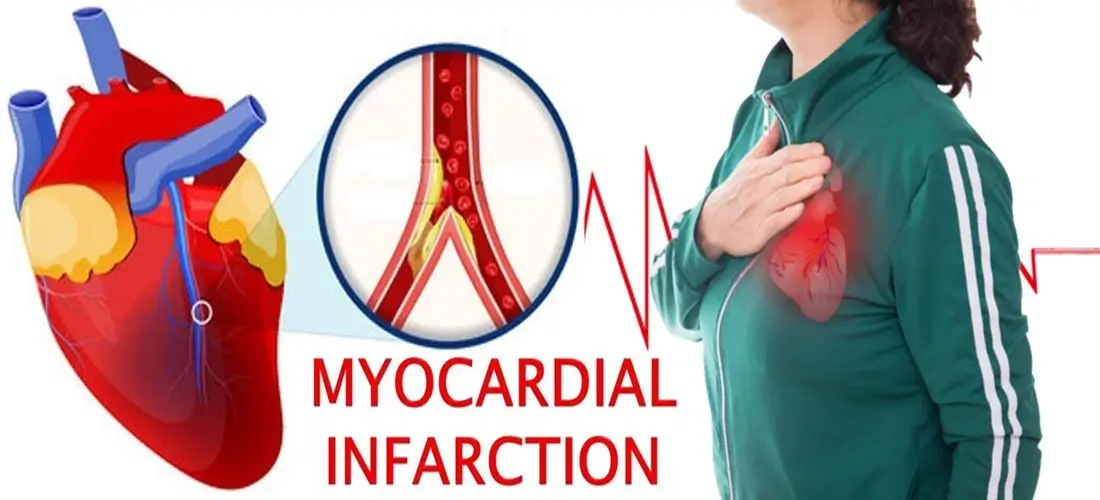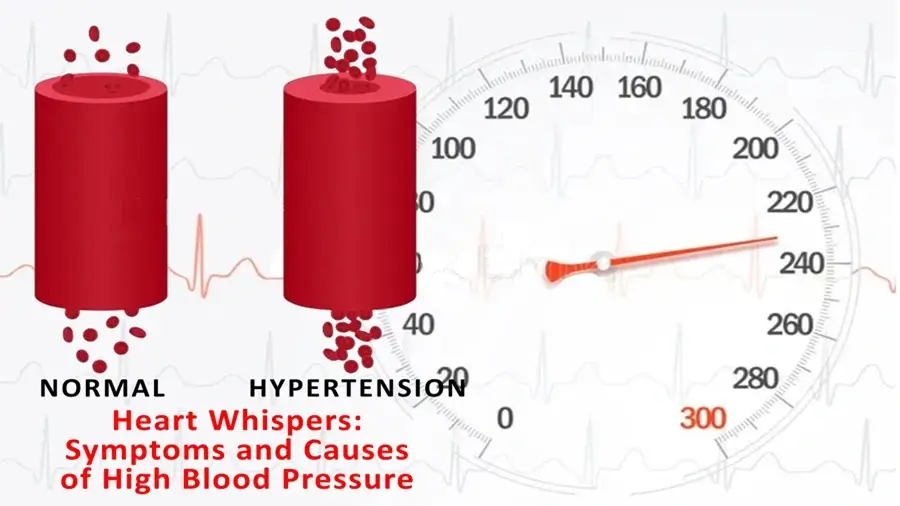
Introduction
When it comes to your heart, there’s no room for taking chances. That is why understanding the complexities of conditions like Myocardial Infarction – more commonly known as a heart attack – is vital. This blog aims to unravel the intricacies of Myocardial Infarction. It enhances the understanding of the heart’s function, recognition of the symptoms, prevention strategies, and treatment options.
Understanding the Heart and its Function
In the middle of our circulatory system is the heart, an amazing organ with a very important job. About the size of a clenched fist, the heart works non-stop to support our lives. It beats around 100,000 times every day, pumping blood through a big network of blood vessels that are over 60,000 miles long. This delivery system brings important nutrients and oxygen to every single cell, keeping our bodies alive and working.
But what happens when this important blood supply to the heart is stopped? This blockage, usually caused by a blood clot, starts a potentially dangerous chain of events called myocardial infarction. Understanding how our heart works not only makes us appreciate this incredible organ more but also helps us see how and why heart attacks happen.
What is a Myocardial Infarction or Heart Attack?
A heart attack, also called a myocardial infarction, happens when the heart doesn’t get enough oxygen-rich blood. Think of the heart’s blood vessels like important pipes. Over time, these pipes can get narrow and clogged with unhealthy things like fat and cholesterol. This narrowing happens slowly, and we might not notice it until it’s a big problem.
When these pipes are so narrow or blocked that they can’t give enough blood to the heart, a heart attack can happen. If we ignore the warning signs and don’t get help fast, the heart muscle, which needs oxygen, can start to die. In short, that’s what happens during a heart attack. But by learning about it and doing things to prevent it, we can try to avoid this happening.
Recognizing the Symptoms of Myocardial Infarction or Heart Attack
Finding out if you’re having a heart attack can be like hearing a soft voice in a big, noisy place. The signs might not be loud, and they can be easy to miss or not understand. One big sign is feeling uncomfortable in your chest. People often describe it as feeling really full or having a lot of pressure, like a big animal sitting on your chest. It might also feel like a squeeze or a lasting ache. The uncomfortable feeling can also spread to other places, like your arms, neck, jaw, or stomach.
Other signs include feeling like you can’t breathe well, suddenly getting sweaty and cold, feeling very sick to your stomach, or getting dizzy. The important thing to know is that these signs can happen all at once or one after another. Sometimes, there might not be any uncomfortable feeling in the chest at all. It’s like a puzzle, but knowing these signs could be the key to saving a life. If you notice these signs, it’s important to get help right away. Recognizing these signs and taking them seriously is the first step to getting fast, life-saving help.
Risk Factors Associated with Myocardial Infarction or Heart Attack
While heart attacks can happen to anyone, certain things can make you more likely to have one. These are called risk factors. Some of them come from the way we live, like smoking, eating unhealthy foods with lots of fats and cholesterol, drinking too much alcohol, and not getting enough exercise. Age is also a factor, with men over 45 and women over 55 being more at risk.
Certain health problems can also make a heart attack more likely. Things like high blood pressure, high cholesterol, being very overweight, having diabetes, or having family members with heart problems can raise the chances of having a heart attack. Feeling really stressed or sad a lot can also be hard on the heart over time.
Some groups of people have higher chances of having a heart attack. This includes women after menopause and people with certain things in their genes. If you’ve already had a heart attack or some heart procedures, it means you could have a higher chance of having another one. Knowing about these things that can make a heart attack more likely is the first step to preventing one. Once we know about them, we can start making changes to stay healthy and avoid these risks.
Prevention and Management of Myocardial Infarction or Heart Attack
You can keep your heart safe from a heart attack by making simple choices in your daily life. Doing regular exercise helps your heart stay strong and keeps your weight in a good range, which is really important for a healthy heart. Eating a mix of good foods like lean proteins, fruits, vegetables, and whole grains helps keep your arteries clean. Quitting habits like smoking can make a big difference and reduce your risk of a heart attack.
Also, finding ways to manage stress, like doing yoga or taking some quiet time for yourself, can help keep your heart healthy. Don’t forget to visit the doctor for regular check-ups. These check-ups help keep an eye on things like high blood pressure and high cholesterol that can lead to a heart attack if not taken care of. Stay smart about your health, stay healthy, and remember – it’s always better to stop a problem before it happens.
The Importance of Awareness and Quick Response
When it comes to a heart attack, time is super important. The clock starts ticking the moment you feel the first symptoms. Each second can make a big difference – it can mean the difference between getting better or facing more problems. It’s really important to understand that a heart attack is a big emergency, and the symptoms should never be ignored or thought of as not serious. Even if you’re not completely sure, it’s better to be safe and get help from a doctor right away.
Remember, every moment is really important. So, if you or someone near you shows signs of a heart attack, don’t wait – call 911 immediately. While waiting for help, try to stay calm and not do anything that might make it worse. Knowing what to do quickly is your best way to fight against the bad effects of a heart attack.
The Role of Emergency Medical Services in Myocardial Infarction Treatment
If you think you’re having a heart attack, calling 911 is super important. The people who answer the call, known as paramedics, are like superheroes trained to help with heart attacks. They don’t just take you to the hospital; they can also do important things before you get there. Equipped with special machines that can help your heart start beating again if it’s not working right, and medicines that can make you feel better and help your heart, these paramedics know a lot about heart attacks. They can tell the hospital team what’s going on so they can help you faster.
So, if you feel like you’re having a heart attack, calling 911 right away gives you the best chance of getting better. The paramedics are like real-life heroes on your way to feeling better.
Myocardial Infarction Diagnosis and Treatment Options
When you go to the hospital, doctors check if you have a heart attack. They look at your symptoms, ask about your health, and do a physical exam. They might use tests like electrocardiograms (ECG), blood tests, and pictures to see how much damage there is and where it happened.
If you do have a heart attack, the next step is to treat it. The main goal is to quickly get blood flowing back to your heart to limit the damage. The treatment depends on how bad it is. For smaller heart attacks, you might get medicine to break up clots. But if it’s more serious, you might need a procedure like coronary angioplasty, where they use a balloon to open up blocked arteries. In very serious cases, they might do surgery to redirect blood around the blockage.
Doctors choose the best treatment based on how bad the heart attack is. The goal is to help your heart work better and help you get better.
Lifestyle Changes for Myocardial Infarction Prevention
Transforming your lifestyle can be your best defense against a subsequent heart attack. This entails embracing heart-nurturing habits. Nourish your body with heart-friendly foods brimming with whole grains, lean proteins, fruits, and vegetables. Incorporating regular physical activity into your day keeps your heart fit and your weight in check.
The power of quitting smoking can’t be overstated, as it slashes your heart disease risk significantly. It’s equally crucial to manage your stress levels. Techniques like yoga, meditation, or finding a hobby can help in easing mental strain. Sometimes, medications may be necessary as well to regulate cholesterol, blood pressure, and diabetes. Remember, every small positive change brings you one step closer to a healthier heart and a fuller life.
Myocardial Infarction Recovery and Rehabilitation
Navigating the road to recovery post-myocardial infarction can feel daunting, but with the right plan and mindset, it’s entirely feasible. This process typically unfolds over several months and is rooted in a comprehensive cardiac rehabilitation program. This holistic program is a three-pronged approach to reclaiming your health.
Firstly, it educates about necessary lifestyle transformations that can shield against future heart attacks. It underlines the importance of a heart-healthy diet, regular physical activity, stress management, and smoking cessation.
Secondly, it incorporates customized exercise training to build endurance, improve heart health, and enhance overall well-being.
Lastly, it emphasizes the importance of mental wellness. It offers counseling to alleviate any emotional distress, anxiety, or depression that may accompany the post-heart attack journey.
By dedicating oneself to this rehabilitative path, it’s possible to bounce back stronger, healthier, and more informed. It ultimately creates a robust defense against future heart-related complications. Remember, the road to recovery may be long, but every step forward is a victory in itself.


